What is it like visiting Antarctica with YPT? Young Pioneer Tours took ten travellers to the Frozen continent in December 2022. Their story is not of bravery, endurance and scorbies as were those of Scott, Amundsen, Shackleton or Charcot. On the contrary, we experienced a “postcard trip”, with perfect weather, majestic landscapes, adorable penguins and unforgettable memories.
To read about Antarctica is a country click here
Visiting Antarctica Day 1 to 3: Crossing the Drake Passage
The group boarded the M/V Hondius in Ushuaia on December 4th, at 4pm. The ship is not new to YPT, as we’ve used it on tours to Greenland and Antarctica before. It is a small expedition ship, carrying 160 passengers.

Photo legend: The Hondius in Ushuaia, dwarfed by a super-size cruise ship. In Antarctica, smaller is better: ships with more than 500 passengers are not allowed to make them go on shore.
The first hours followed a very codified ritual: safety briefing, life jacket check, evacuation drill, welcome speech by the captain, etc. The next two days saw us progressing southwards at a very good pace. The Drake Passage was calm and (almost) nobody got sick, which was a good opportunity to get to know each other, sitting with a beer or playing Jenga (on a ship, yes). We also attended a few presentations to give us a taste and a better understanding of what we will see. They are held in the most beautiful conference room in the world: when was the last time you saw an albatross looking out the window?
Biosecurity is an important aspect of an Antarctic cruise. To avoid bringing in invasive species, our clothing and bags were carefully checked and cleaned of any biological elements that could “contaminate” the white continent. Emphasis is also placed on the rules promulgated by IAATO (International Association of Antarctica Tour Operators). The seventh continent does not belong to any nation and anyone can basically do there as they please. That’s why some cruise companies have decided to write a framework to limit the impact of their activity on the area and its wildlife as much as possible.

Photo legend: Life on the Hondius
The Drake Passage was so merciful that it was only 5:30 pm on the second day of sailing when we saw the faded silhouette of the South Shetland Islands emerging on the horizon, bathed in mist. Our first sighting of Antartica! A greeting party of whales, giant petrels, albatrosses and Antarctic petrels came to welcome us. The adventure was finally beginning.
Visiting Antarctica Day 4: Cuverville Island and Neko Harbour
It’s 7am and as I contemplate the mountains plunging into a sea studded with a myriad of ice blocks, I am certain that it is impossible to get tired of such a place.
I wrote above that Antarctica does not belong to anyone and that everyone can do what they want there. This is not entirely true. The Antarctic Treaty imposes a few rules, one of which forbids the landing of more than 100 people at a time. The 160 passengers of the Hondius are thus split into two groups: while the first one can finally stretch their legs on Cuverville Island, the other, including the YPT travellers, embark on a zodiac cruise in Andvord Bay. In front of us, a panorama of blue and white stretches out, the barely veiled sky reflecting on a crystal sea from which some penguins emerge. We make our way through the ice and meet our first Wedell seal and some humpback whales.
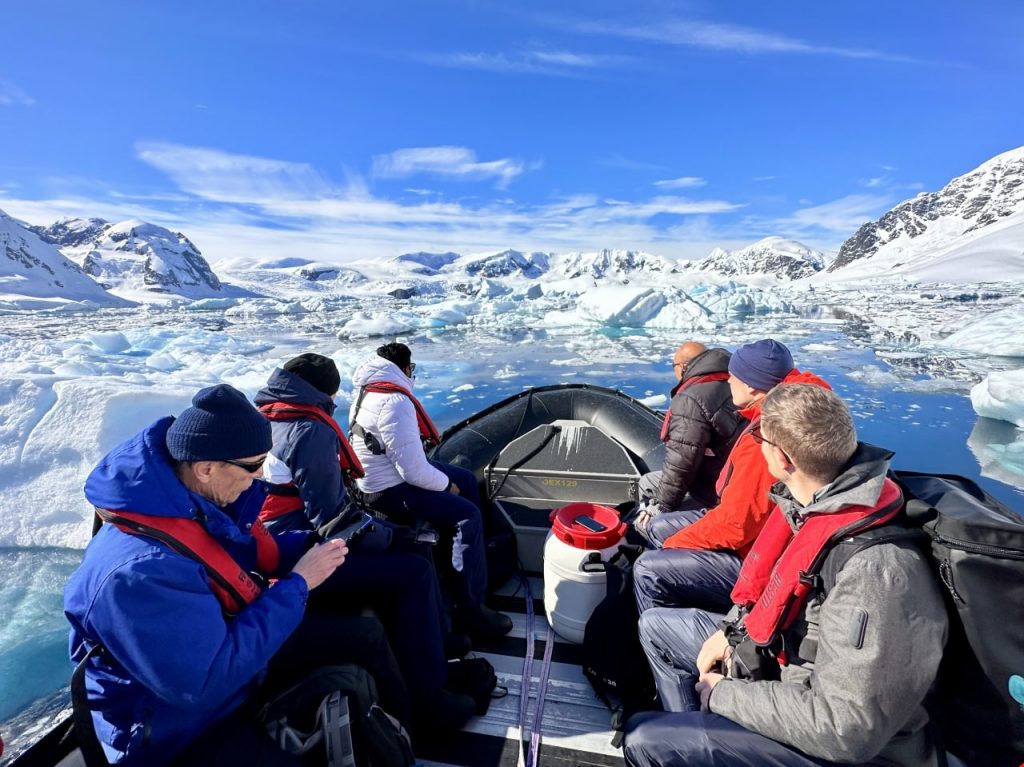
A couple of hours later, we disembark on Cuverville island, a mass of dazzling white reliefs dotted with penguin nesting areas.
The island is home for a colony of several thousand Gentoo penguins (recognizable by their orange beak). They wait patiently for the snow to melt so they can build their nest and lay an egg. In January, they will hatch and the babies that will survive the attacks of skuas will take to the sea in March, where they will feed until next November. While waiting for the snow to melt, they collect stones which they offer to their partner, walk around, have sex and look cute. What a life.



Our afternoon program included the same activities in Neko Harbour, a bay overhung by a glacier, but we soon realize that the ice make it too dangerous to land there. We can still do the zodiac cruise, though, and we spend a few hours on the water, admiring the millions of facets of the ice blocks, with their bluish shadows, and the tormented reliefs of the coast. The wildlife is also incredible, with sightings of chinstrap penguins and seals lazing on ice rafts and, for the luckiest among us (all the zodiac don’t go in the same direction, to keep a sense of isolation and not stress the animals), the exceptional sighting of two humpback whales asleep in the water, which is a real treat for the eyes.
“You had a postcard day. On the last cruise, we had this weather for about an hour [out of ten days]: the rest of the time we were dealing with horizontal snow”, our expedition leader, Pippa, tells us during the evening recap.
In the evening, I struggle to write this text, my attention regularly drawn to the landscape bathed in the light of the never-ending sunset. We are in the well-named Paradise Bay.

Visiting Antarctica Day 5: Base Brown and Damoy Point
Yesterday ended in a festival of colors; today starts in black and white. The weather is overcast and the water is inky black. Another face of Antarctica, where the bluish reflections struggle to find a place among the black and white reflections. On this stage, which looks like something out of a movie, there are a few actors: penguins, a humpback whale that escapes when it hears us, a leopard seal, but also a colony of blue-eyed imperial shags nestled on the side of a cliff.
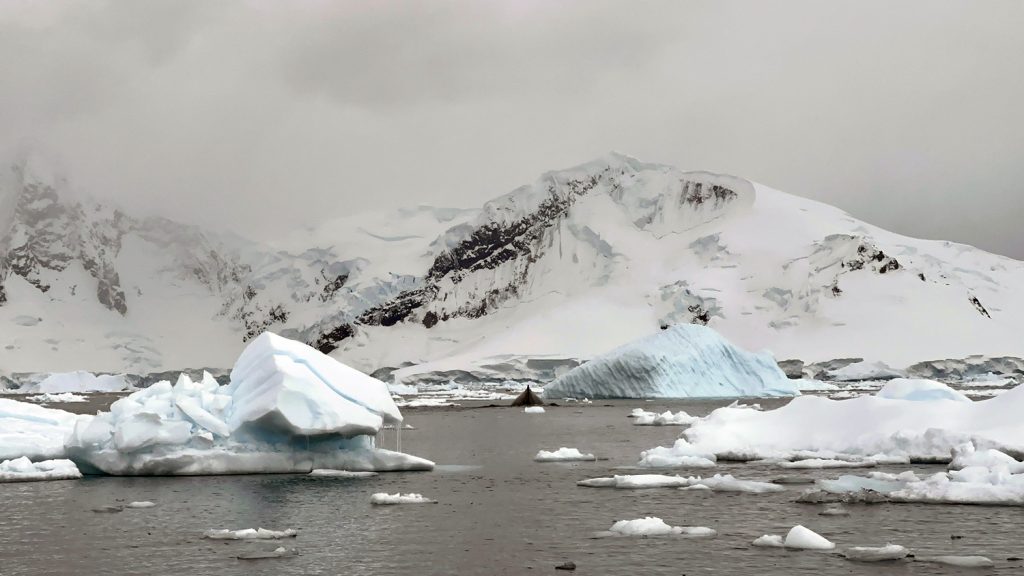
We land near the Admiral Brown Station, one of the thirteen bases installed by Argentina on the white continent. It was built in 1951, but burned down in 1984 by a doctor who went crazy after he was told that he would not be rotated and that he would have to spend two years there instead of one. The base we see today is smaller than the original and for good reason: it is only occupied in summer. A safety measure.
To read about the Antarctica Treaty click here.
We have fun there: the base, where the researchers have not yet arrived, was taken over by a colony of gentoo penguins that we are never tired of observing.
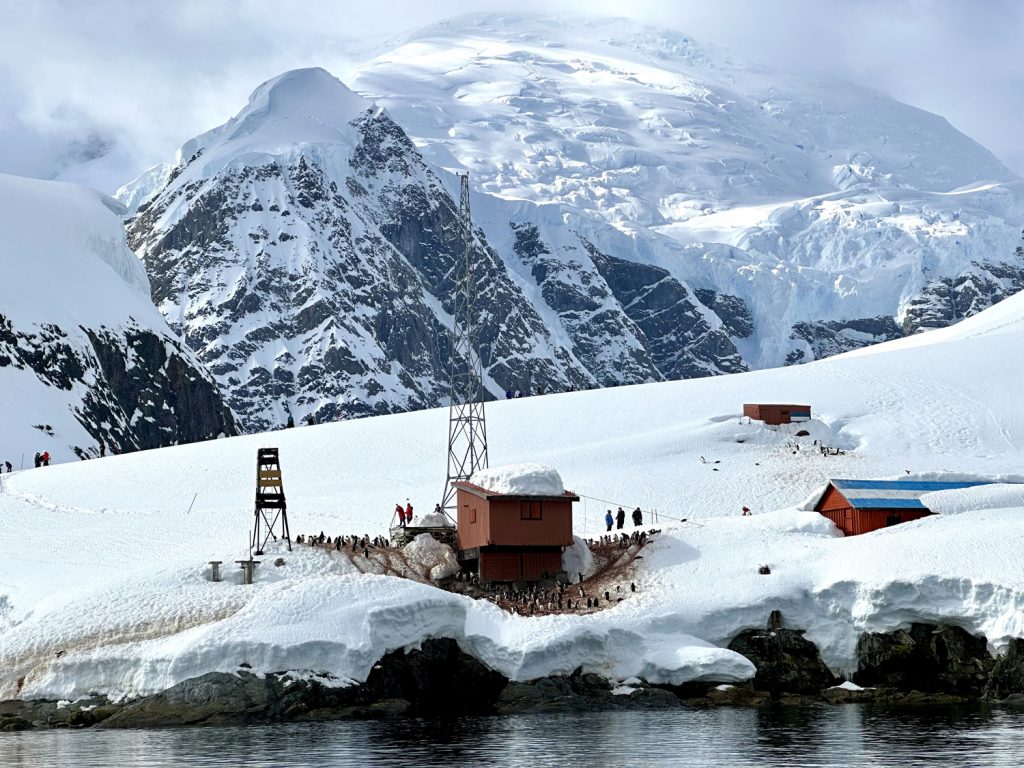
The afternoon was supposed to take us to Danco Island, but the gusts of wind were too strong and would have prevented us from disembarking, so we headed for Damoy Point, where the refuge of the same name is located. It was established in 1975 by the British near an airstrip built two years earlier. The site has not been used since 1993 and has been considered a historical monument since 2009.
The airstrip was 400 meters long and extended over the ice. The location is perfect for this. Unlike the bays that we have traveled so far, where we were often surrounded by mountains, Damoy Point seems to extend as far as the eye can see and gives me (finally) the measure of the immensity of the continent. It’s just a thought, of course, but this panorama seems to me to be the entrance to the Frozen Continent and its 14-million square kilometers of ice. It reminds me of the scene of the suicidal penguin in Werner Herzog’s documentary “Encounters At The End Of The World Penguin”.

We then go around the bay in another zodiac, encountering several whales and seals among the iceberg. The wind is strong and the weather more gloomy, but thankfully another zodiac joins us and a crew member offers us hot chocolate. With rum, to keep up our spirit!
To read about why you can’t claim Bir Tawil in this book.
Visiting Antarctica Day 6: Petersmann Island and Salpêtrière Bay
“I wonder if I’ll ever see anything this beautiful again,” a woman tells me as we contemplate the panorama from Petersmann Island. I reassure her – I had the same concern last year – but I understand her perfectly, as the landscape stretching out at our feet looks like a postcard. In the foreground, a colony of penguins, perched on a rock. Beyond, fields of ice dotted with icebergs half drowned in sunlight, half plunged in shadow. In the background, mountains are covered with fluffy clouds.
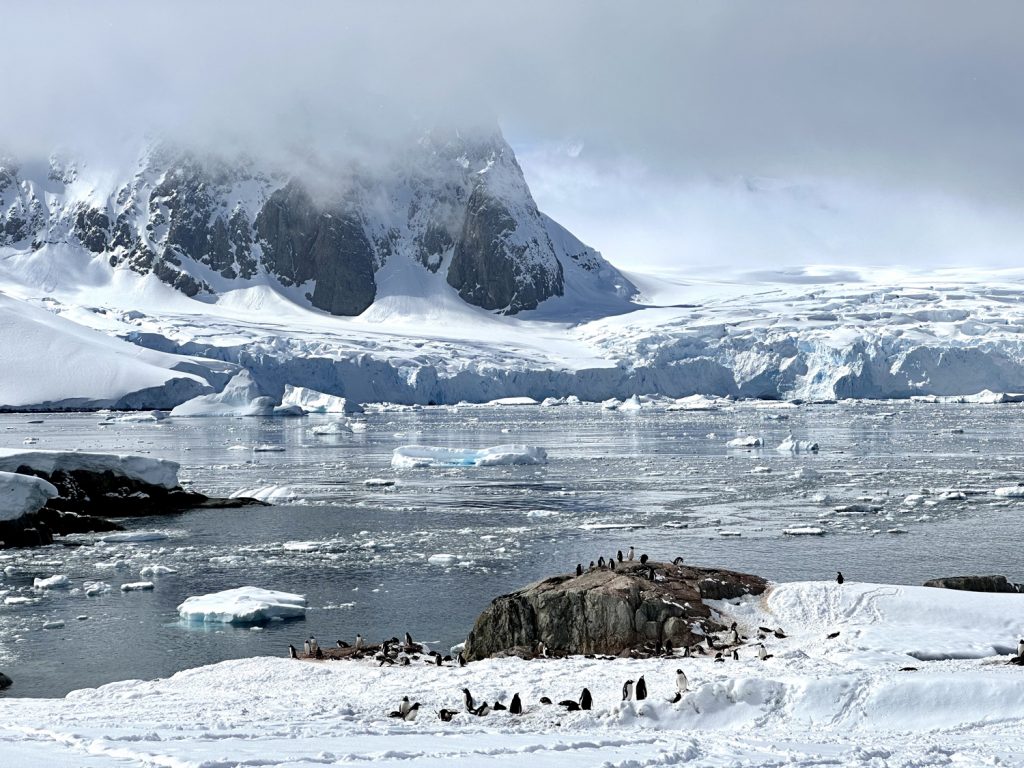
The day had not started under the best of conditions: we woke up in fog and snow. But once in the zodiacs, the magic worked: the absence of wind made the temperature (-2°C) quite bearable and the clouds disappeared little by little, releasing the colors of the not only white continent.
The bay where we sail is of an indescribable beauty; the landing site too. Petersmann Island offers us magnificent views, many opportunities to wander alone, and the possibility to see several “rookeries” of Gentoo and Adélie penguins. Every direction we look, every picture we snap seems to be a painting, like those illustrations in the adventure books of our childhood.
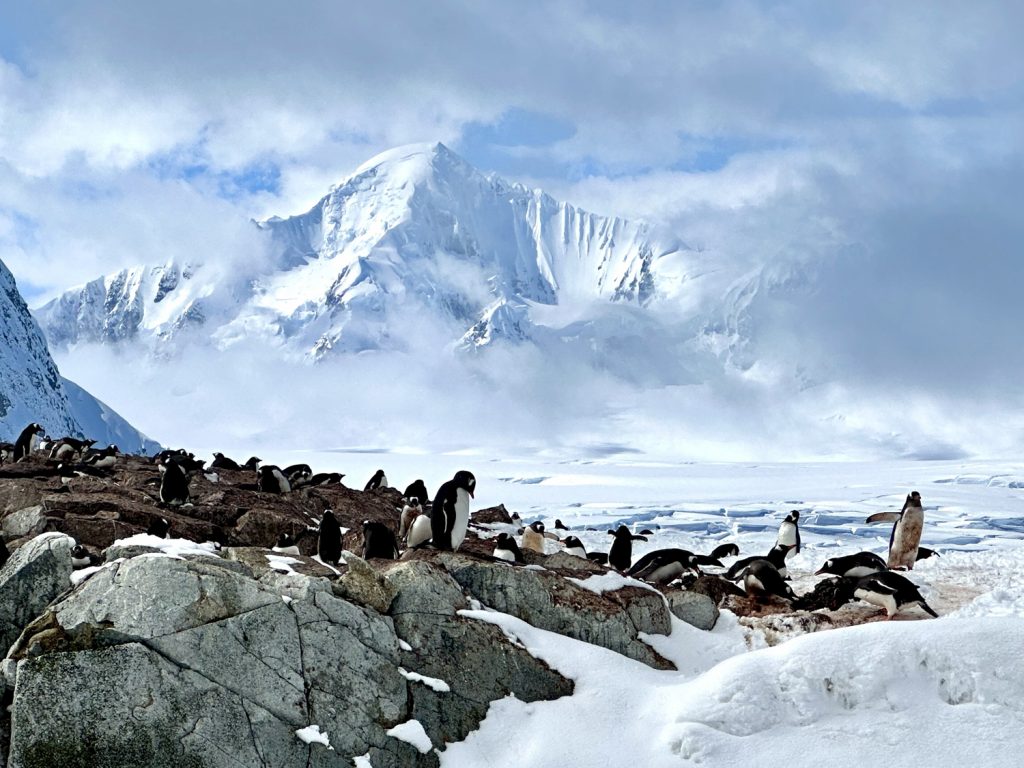
In the afternoon, we were supposed to land on Charcot Island, where the French commander and his crew spent the winter of 1903, but the presence of too much ice near the landing zones prevented us from doing so. Instead, we leave for a zodiac excursion in the Salpêtrière Bay. It is dominated by the majestic shapes of gigantic icebergs that are attracted by the current and get grounded there, waiting to melt.
We have the possibility to take a polar plunge on one of the beaches of the bay: Young Pioneer having a reputation to maintain, several of our guests take the plunge. It’s actually easier than it looks and quite good for the body. Supposedly!
The day ends with the traditional barbecue organized by the Hondius crew, in the heart of the Lemaire Channel, whose beauty cannot be described in a thousand words.

Day 7: Port Lockroy and Gerlache Strait
“Good morning Hondius, good morning. It’s a beautiful day. The temperature is 5° centigrade and it’s bright and sunny outside ” Pippa’s morning messages are one and the same: we had incredible luck in terms of weather. “This is not normal. We’ll pay for it when we cross the Drake Passage,” some of our travellers worry. Spoiler: we didn’t.
For this last day of activities, we anchor in Port Lockroy Bay. Philatelists who are on the trip are in heaven, since the place is known to host the “Penguin Post Office”, a post office operated by the UK.
Four women are staying here for six months, in total isolation – their island is the size of a basketball court and they don’t own a single boat – and in spartan comfort, with no running water, limited electricity and of course no Internet connection. We take two of them on the Hondius; after enjoying a hot shower, they give us a presentation on the history of the British presence in Antarctica, which became permanent in 1943.
The morning begins with a landing on the island which counts as inhabitants, in addition to the four volunteers, several dozens of penguins. The place has been preserved in the style of the 1950’s (including pictures of vintage Playboy magazine) except for the souvenir store, which offers a varied choice of products: t-shirts, plush toys, magnets, books, stamps… We mail our postcards (only 1£ to Europe!) and get our passport stamped.
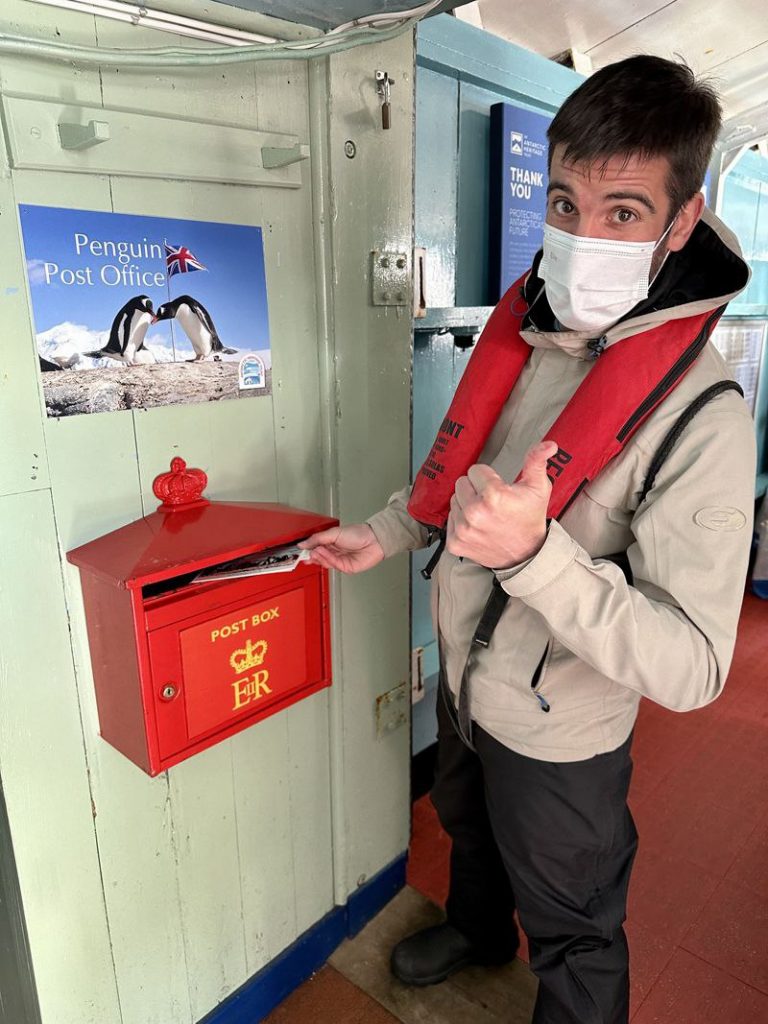
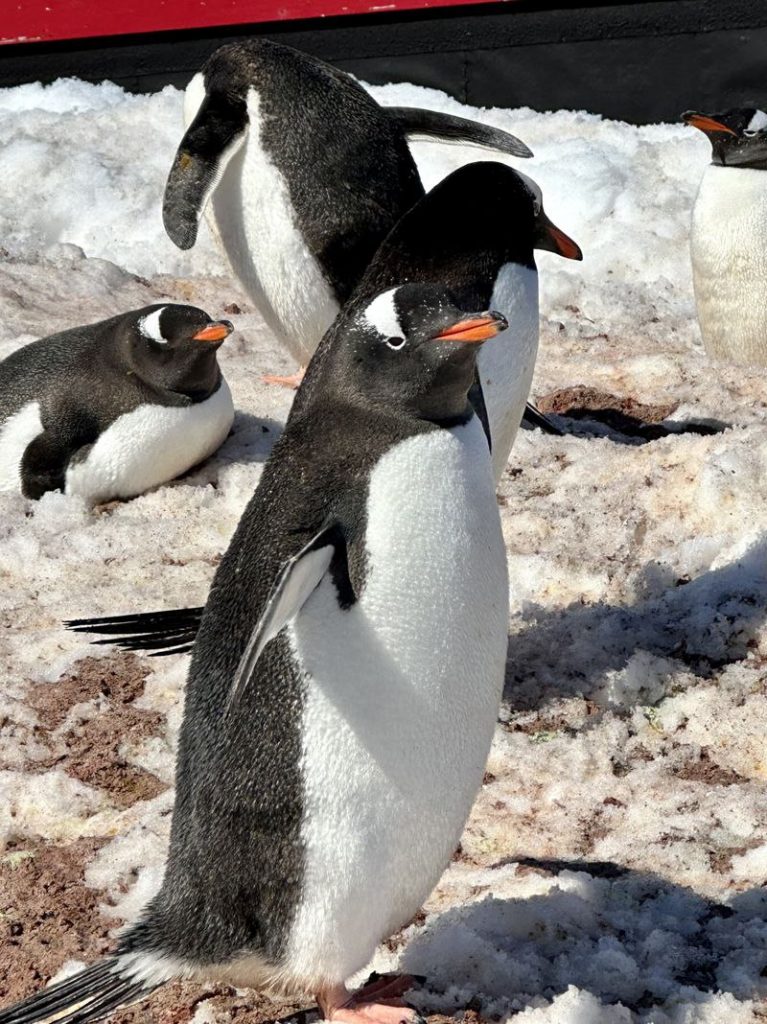
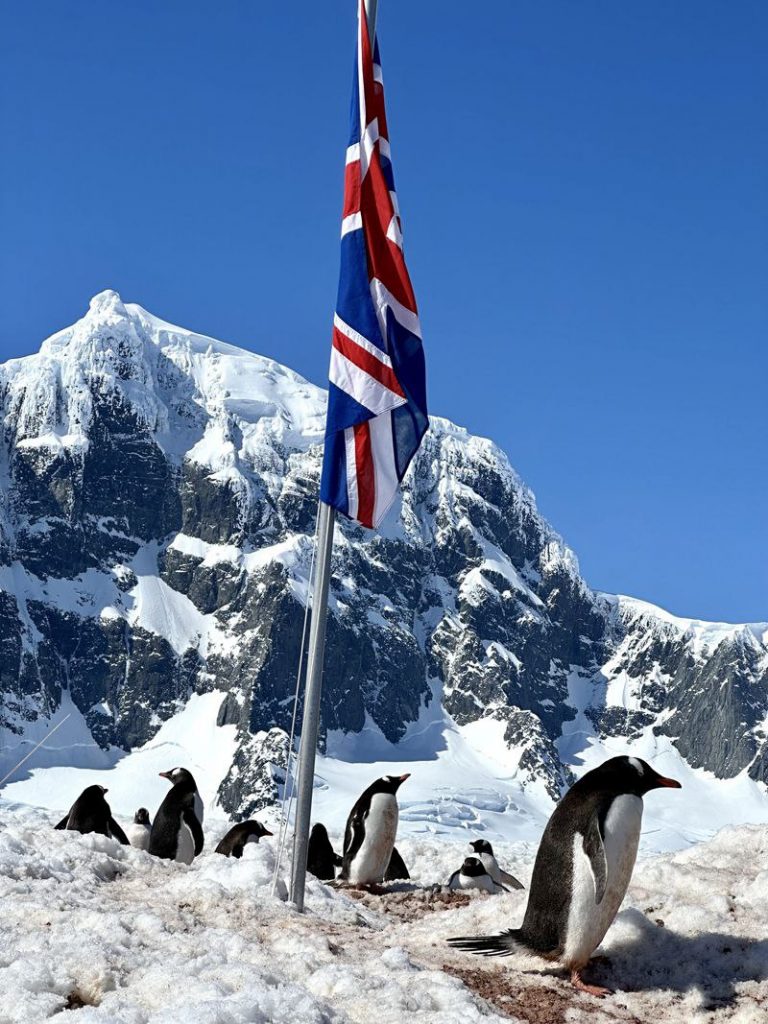
The following landing on Jougla Point is our last chance to observe the penguins and to stretch our legs before the journey towards Ushuaïa, which is going to take us 2.5 days. We make this moment last as long as possible and YPT guests are among the last to leave the island, with a heavy heart.
Our trip to the north makes us cross, in the afternoon, the spectacular Neumayer Channel. Its mountains seem to be covered by a shroud of the purest white. The majesty and beauty of the place imposes respect: at the bow of the ship, everyone starts to whisper, as if not to disturb the peace of the place.

Visiting Antarctica Days 8-10 : Back to Ushuaia
Then comes the Drake passage, which we call the Drake Lake, considering how calm it is. The way back to Ushuaia is marked by two main events: first, our encounter with a dozen whales feeding in the high seas, for which we stopped for about an hour, simply observing them. Then, a photo competition between the passengers. Young Pioneer guests managed to make it to the finals in all three categories: wildlife, landscape and fun. Here are the photos we submitted:
Wildlife:
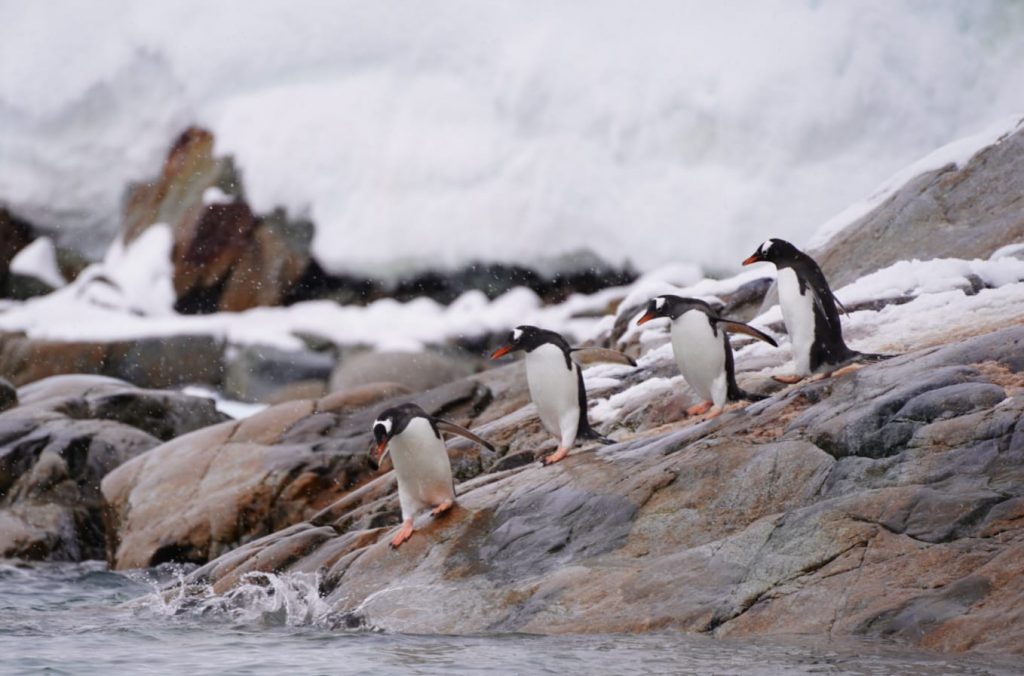
Landscape:

Fun:
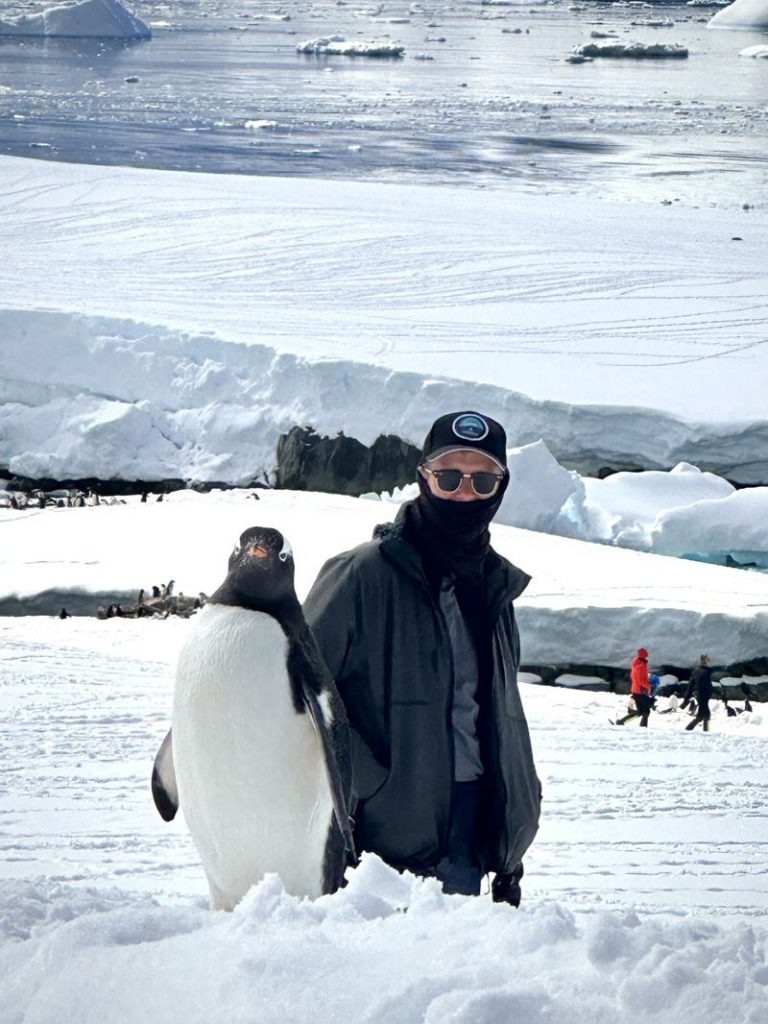
From start to end, this has been a perfect cruise – and for many of us, the trip of a lifetime. As we disembark in Ushuaia, many are already thinking about going back. They caught the polar bug.
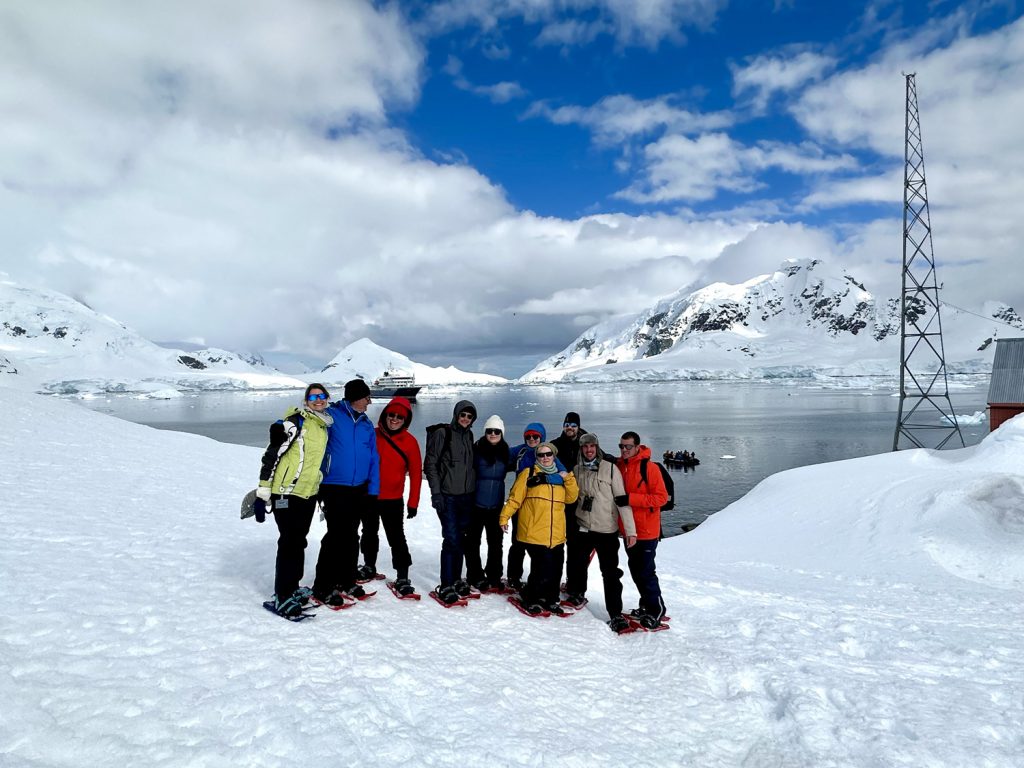
Want to join our next polar adventure to Greenland? Check the following link.





